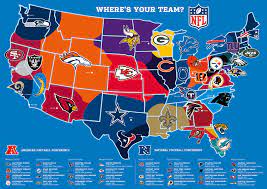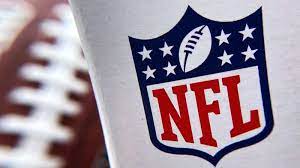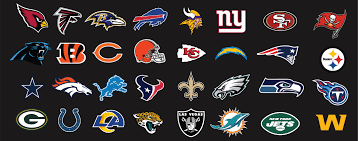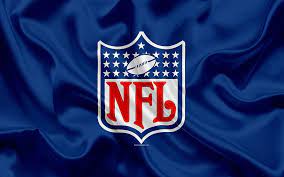NFL
The National Football League (NFL) is an American sports juggernaut, captivating millions of fans with its thrilling displays of athleticism, strategy, and competition. At the heart of the NFL’s appeal is its carefully crafted and eagerly anticipated schedule. In this in-depth exploration, we’ll dive into the intricacies of the NFL football schedule, discussing its evolution, the factors that shape it, and why it’s such a crucial aspect of the league’s success.

A Brief History of the NFL Schedule
The NFL schedule has come a long way since its inception. In the league’s early years, scheduling was a relatively straightforward process. Teams played an unstructured set of games against opponents of their choosing, often following a “who’s available to play” approach. This created significant challenges in determining champions and maintaining a competitive balance.
The NFL began moving towards a more structured schedule in the 1930s, culminating in the introduction of a standardized, 12-game regular season in 1947. The emergence of divisions within the league added further structure, as teams started playing a set number of games against divisional rivals and non-divisional opponents.

Over the years, the schedule continued to evolve. The league expanded, adding more teams and games. The introduction of the Super Bowl era in the 1960s and the subsequent merger with the American Football League (AFL) in 1970 brought additional changes. The NFL’s modern scheduling format emerged during this period, setting the stage for the captivating season fans enjoy today.
The Components of the NFL Schedule
The NFL schedule official site consists of several key components, each carefully designed to achieve various objectives. Let’s break down these components:
1. Regular Season
The heart of the NFL schedule is the regular season. This is when each of the 32 teams plays a 17-game schedule, typically divided into 16 games with one bye week. The season usually starts in early September and concludes with the final regular-season games in early January.
Teams play games against their divisional rivals, non-divisional conference opponents, and inter-conference opponents. The schedule is designed to ensure that over time, every team faces a balanced mix of competitive opponents, contributing to the league’s parity.
2. Preseason
Before the regular season begins, NFL teams participate in a series of preseason games. These are typically four games per team, serving as an opportunity to evaluate players, test strategies, and build team chemistry. While preseason games don’t count in the standings, they are crucial for coaches and players in making final roster decisions and preparing for the regular season.
3. Playoffs
Once the regular season concludes, the NFL playoffs commence. These are a single-elimination tournament that ultimately determines the league champion. The playoffs consist of several rounds, including Wild Card weekend, Divisional weekend, Conference Championship games, and the Super Bowl. The schedule for the playoffs is structured to ensure the most competitive teams have the opportunity to vie for the championship.
4. Prime-time Games
The NFL schedules a variety of games in prime time, usually on Thursday nights, Sunday nights, and Monday nights. These games often feature high-profile matchups and serve to maximize television viewership. Prime-time games are a significant draw for fans and a crucial element of the NFL’s media strategy.
5. International Games
In recent years, the NFL has expanded its reach by scheduling international games. These games are held in various countries, including Mexico and the United Kingdom. International games help the NFL reach a global audience and generate additional revenue.
Factors Shaping the NFL Schedule
Creating the NFL schedule is a complex undertaking that involves numerous factors and considerations. Here are some of the primary elements that shape the schedule:
1. Competitive Balance
The NFL strives for competitive balance. To achieve this, the league considers several factors, such as team performance in the previous season, head-to-head matchups, and the strength of the team’s roster. Competitive balance ensures that fans can enjoy close, exciting games throughout the season.

2. Television Contracts
Television contracts play a pivotal role in the NFL schedule. The league generates a substantial portion of its revenue from television broadcasting. As such, the schedule is designed to maximize viewership and advertising revenue. This is why prime-time games and marquee matchups are strategically scheduled.
3. Travel Considerations
The NFL is unique in its geography, with teams spanning the entire United States. The league takes travel considerations into account to minimize the strain on teams. For example, teams often have consecutive road games to avoid unnecessary travel.
4. Bye Weeks
Each team has a bye week during the season. This break allows players to rest, recover from injuries, and prepare for the second half of the season. Bye weeks are strategically scheduled, usually in the middle of the season, to provide teams with a reasonable balance of games before and after their break.
5. Special Events
The NFL schedule accommodates special events and traditions. For example, Thanksgiving Day features a slate of games, and the Super Bowl is held on the first Sunday in February. The league also schedules games on holidays like Christmas and New Year’s Day when they fall on the weekends.
6. Venue Availability
The NFL shares stadiums with other sports leagues and events. Scheduling must take into account venue availability, which can be a complex jigsaw puzzle. Teams often share their stadiums with Major League Baseball teams, so NFL games must be scheduled around baseball games during the regular season.
7. Weather Considerations
Weather is a crucial factor, especially in outdoor stadiums. The league aims to avoid scheduling cold-weather teams for too many late-season games in harsh conditions. This not only ensures player safety but also maintains competitive fairness.
The Schedule-Making Process
Creating the NFL schedule is a delicate and intricate process that requires a dedicated team of professionals. It’s not as simple as throwing darts at a calendar. The schedule-making process typically follows these steps:
1. Collection of Requests
Teams submit their scheduling requests to the league. These requests may include preferences for home or away games, the timing of bye weeks, and special requests related to travel or game times.
2. Computer Algorithms
The NFL uses advanced computer algorithms to generate a preliminary schedule. These algorithms account for the various factors discussed earlier, such as competitive balance, travel, and television contracts. The goal is to create a balanced and fair schedule.
3. Iterative Process
The schedule-making process is an iterative one. The initial schedule is rarely perfect, and adjustments are made based on feedback from teams, stadium operators, and television networks. The goal is to create a schedule that accommodates as many requests and constraints as possible.
4. Final Approval
Once the schedule is refined and adjusted, it undergoes a final approval process. This involves sign-off from team owners, who have the opportunity to review and voice any concerns. After all necessary approvals are obtained, the schedule is finalized and released to the public.
The NFL Schedule and Fan Engagement
The NFL schedule is more than just a calendar of games; it’s a central pillar of fan engagement. Here’s how the schedule impacts fans:
1. Anticipation and Excitement
The release of the NFL schedule is a highly anticipated event for fans. It sets the stage for the entire season, with fans eagerly discussing matchups, prime-time games, and potential playoff scenarios. The anticipation and excitement surrounding the schedule help maintain fan engagement throughout the year.
2. Tailgating and Fan Gatherings
The schedule also plays a critical role in fan traditions, such as tailgating. Knowing when their team plays allows fans to plan gatherings and pre-game activities. This adds to the sense of community and camaraderie that surrounds NFL fandom.
3. Fantasy Football
Fantasy football is a massive part of NFL culture. The schedule informs fantasy football players about when their players will be in action. It drives interest and engagement, as fans follow their fantasy teams closely throughout the season.
4. Travel and Attendance
For die-hard fans who attend games in person, the schedule is vital for planning trips to the stadium. Knowing when and where their team plays enables fans to book tickets and accommodations in advance, ensuring a memorable game-day experience.
5. Merchandise and Marketing
The release of the schedule provides marketing opportunities for the league and its teams. It allows for the promotion of tickets, merchandise, and special events tied to specific games. Merchandise related to prime-time matchups, divisional rivalries, and playoff scenarios can be especially popular.
6. Social Media and Online Communities
The NFL schedule fuels discussions on social media and in online fan communities. Fans share their excitement, opinions, and predictions for each game. This online engagement keeps fans connected throughout the season, even when they can’t physically attend games.
Memorable Moments from Past NFL Schedules
The NFL schedule has produced countless memorable moments over the years. Here are a few that stand out:

1. The Immaculate Reception (1972)
One of the most famous plays in NFL history, Franco Harris’s Immaculate Reception, occurred in a playoff game between the Pittsburgh Steelers and the Oakland Raiders. This dramatic moment forever etched its place in NFL lore.
2. The Snow Bowl (2001)
A December 2001 game between the New England Patriots and the Oakland Raiders, known as the “Snow Bowl” or “Tuck Rule Game,” featured challenging weather conditions and a controversial call that added to the game’s legend.
3. The Thanksgiving Day Games
Thanksgiving Day in the NFL is synonymous with football. These games, held annually, create a unique atmosphere and have produced numerous memorable moments, both on and off the field.
4. The “Music City Miracle” (2000)
A thrilling and improbable lateral play in a wild-card playoff game between the Tennessee Titans and the Buffalo Bills became known as the “Music City Miracle.” This play showcased the unpredictable nature of NFL schedules.
5. Monday Night Miracle (2000)
A Monday Night Football game between the New York Jets and the Miami Dolphins in 2000 featured a remarkable comeback by the Jets, who erased a 30-7 deficit to win 40-37 in overtime.
Challenges and Criticisms
While the NFL schedule is a marvel of logistics and engineering, it’s not without its challenges and criticisms:

1. Injuries
Injuries are an unfortunate reality in the NFL. Players can get hurt at any time, but injuries during prime-time games or to star players can lead to criticism. Fans expect marquee matchups to feature the best players at their peak, so injuries can be disappointing.
2. Rigidity
The NFL schedule is highly structured, with little room for flexibility. This can be a challenge when unforeseen events, such like inclement weather or global health crises (e.g., the COVID-19 pandemic), disrupt the schedule. The league has to adapt quickly to maintain the integrity of the season.
3. Competitive Balance
While the league works diligently to maintain competitive balance, it’s impossible to predict which teams will excel in a given season. Some years, marquee matchups may feature teams that end up performing poorly, leading to less exciting games.
4. Length of the Season
The length of the NFL season has been a subject of debate. Some argue that extending the regular season beyond 16 games could negatively impact player health and safety. The league must carefully consider these concerns when contemplating schedule changes.
Future Developments
The NFL schedule will likely continue to evolve in response to changing circumstances and fan preferences. Some potential future developments include:
1. Expanding the Regular Season
There has been ongoing discussion about expanding the regular season from 17 games to 18 or even more. This would require careful consideration of player health, competitive balance, and the potential impact on records and milestones.
2. More International Games
The NFL’s international expansion is likely to continue, with more games played in various countries. This opens new markets and opportunities for fan engagement.
3. Digital Engagement
The NFL will continue to leverage digital platforms for fan engagement. With the rise of streaming and social media, fans can expect more interactive experiences and content related to the schedule.
4. Fan Feedback
The league will likely continue to consider fan feedback when making scheduling decisions. This could involve surveys, online forums, and other methods of gathering fan input.
Conclusion
The NFL football schedule is not just a list of games; it’s a reflection of the league’s commitment to maintaining competitive balance, engaging fans, and maximizing its presence in the world of sports. The process of creating the schedule is a complex and iterative one, and it involves numerous factors, including competitive balance, television contracts, travel, and special events.
As the NFL schedule continues to evolve, it will undoubtedly bring new challenges and opportunities. It will remain a focal point of anticipation and excitement for fans, and a key driver of fan engagement throughout the year. Whether it’s the anticipation of a Thanksgiving Day game or the thrill of a Super Bowl matchup, the NFL schedule is woven into the fabric of American sports culture, and it’s here to stay.

